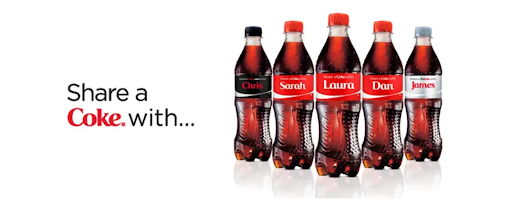
Marketing campaigns are as varied as the brands that use them. Whether you’re using email digital marketing, search engine marketing, or some other marketing channel, successful campaigns have some essential traits in common. Once you understand the process of planning and developing impactful campaigns, you’ll be ready to launch your own.
Here’s a breakdown of how to create a marketing campaign for a product or service that will deliver results for your business.
Introduction to marketing campaigns
A marketing campaign is a strategic, organized effort to promote your brand. Your campaign typically includes several steps and activities geared toward various promotional goals. Some examples of marketing goals for campaigns include:
- Increase brand awareness
- Generate new leads
- Drive conversions
- Increase revenue
- Boost customer lifetime value (CLV)
- Improve customer retention
- Increase web traffic
Essential components of marketing campaigns
Your campaign’s style and structure will differ depending on the goals you want to achieve, but all campaigns have some key factors in common. You may wonder, what are the five essential parts of a marketing campaign? They are:
- Clear goals and objectives
- A well-defined target audience
- A strong marketing strategy
- A compelling call to action (CTA)
- Analysis of key performance indicators (KPIs)
Marketing campaign evolution
In the past, marketers relied on channels like television, radio, and print to run their campaigns. Today, brands can still use traditional marketing channels, but they also have many digital marketing options available. Email marketing campaigns, for example, are increasingly popular thanks to their high ROI.
Setting the foundation for your marketing campaign
So, how do you start a marketing campaign? Before you launch your marketing campaign, you need to establish some foundational details, such as your goals and budget.
Establishing campaign goals and KPIs
Your goals will guide your campaign’s strategy. A campaign geared toward attracting new customers will look very different from one aiming to increase customer loyalty.
Think about exactly what you want to achieve through your campaign. What difference do you hope this campaign will make to your business? List these goals and make sure they meet the SMART framework — goals should be specific, measurable, achievable, realistic, and time-bound.
Determine which KPIs will help you measure your campaign’s success toward these goals. For example, if your goal is to increase conversions, select metrics like your click-through rate (CTR), conversions, and sales to track during your campaign.
Defining your target audience and their needs
Marketing campaigns must address a clearly defined target audience. Who are your brand’s ideal customers? What traits do they share?
Answering these questions will help you narrow down your target audience. Keep in mind that different campaigns can have different target audiences. In one campaign, you may target previous customers who haven’t made a purchase recently. In another, you could target consumers who have never purchased from your brand.
Whatever your target audience, it’s essential to consider their unique needs. Put yourself in their shoes and think about what matters most to them. Determining your audience and their needs will ensure your campaign connects with your target customers.
Creating a value proposition and campaign message
At its core, a marketing campaign is a message from your brand to your target consumers. You must create a compelling message addressing your customers’ needs and concerns.
Consider the main problem that your product or service can solve. Why should customers choose your brand over competitors? That’s the question your value proposition needs to answer.
Planning your marketing campaign
Once you’ve established your goals, target audience, and value proposition, you can move on to specific campaign development. How do you structure a marketing campaign? The next step is selecting the marketing channels you’ll use.
Choosing the appropriate channels for campaign delivery
Brands have many different marketing channels to deliver their campaigns. You must decide early on what channel or channels to use because your selection will significantly impact the structure of your campaign.
If you’re wondering how to create an email marketing campaign, for instance, you’ll need to learn how to create content optimized for email. On the other hand, if you’re wondering how to create a successful influencer marketing campaign, you’ll need to follow a different set of best practices for your content.
Use your knowledge of your target audience and your goals to select the best channel for your campaign. Go where your target audience is most likely to see and engage with your campaign message.
Setting a marketing campaign timeline
Every marketing campaign operates over a set timeline. Part of how to create a digital marketing campaign is deciding how long you want your campaign to run.
Your timeline will depend on your budget, campaign type, and goals. Remember that a short yet highly impactful campaign can be as useful as a longer, more subtle campaign.
Preparing your team and defining roles
Marketing campaigns are a team effort, and everyone needs to understand their role. Some roles you may need to assign include:
- Campaign manager
- Data analyst
- Graphic designer
- Copywriter
- Strategist
- IT specialist
Make sure each team member knows what you expect so they can contribute their best to the campaign.
Executing your marketing campaign
By now, you’ve learned almost all the key parts of how to create a successful marketing campaign. All that’s left to do is implement your marketing campaign and analyze your results.
If you’re running a digital campaign, go into your campaign platform and click launch. Your campaign will go into effect immediately unless you specify a different timeline.
Assessing and improving your campaign
After launching your campaign, there’s still more to do. Your next step is to continually assess and improve the campaign based on the data you track.
Monitoring and analyzing data
Start monitoring and analyzing your campaign data as soon as you launch. Your KPIs can tell you a host of information about how successful your campaign is and what adjustments need to be made. Depending on the marketing channel you’re using, there are different ways to access this data.
For example, if you use a video marketing strategy on social media, you should have access to a campaign dashboard on the platform. These dashboards contain key metrics about your campaign that update regularly. Similarly, Google provides an analytics platform when you run ads through their search network.
Consider using additional data monitoring and analysis tools for even deeper insights into your campaigns. The more data you have, the better equipped you’ll be to make strategic decisions about your campaign.
Adjusting strategies based on performance and feedback
In some cases, customers may provide feedback about your campaign. Be receptive to this feedback and consider making adjustments if common issues or themes emerge.
Your campaign strategy should always be flexible enough to adjust if necessary. Be open to learning more about what works and what doesn’t. Making changes when something isn’t working will help you get more out of your campaigns. Plus, digital campaigns offer excellent flexibility, so you can make adjustments if needed.
Case studies and examples
Examining marketing campaign examples may help inspire you for your own campaigns. Here are some excellent campaigns to learn from.
Coke’s Share a Coke campaign
Coca-Cola used the power of social media to promote its soda in the successful “Share a Coke” campaign. The brand released special Coke bottles with people’s names on them and encouraged customers to post pictures when they found their own names.

Always’ Like a Girl Campaign
Another campaign that garnered a lot of attention was Always’ “Like a Girl” campaign. Always promoted a series of commercials in which girls from diverse backgrounds discussed what “like a girl” means. The videos went viral on YouTube with the hashtag #likeagirl and encouraged consumer engagement.

Apple’s “Shot on iPhone” Campaign
To promote the new iPhone by highlighting its advanced camera features, Apple launched the “Shot on iPhone” marketing campaign. The brand encouraged iPhone users to share videos and images they took with their iPhones using the hashtag #shotoniphone. Millions of people shared content, and Apple promoted the best images on billboards with the simple caption “Shot on iPhone.”
Real-world applications and insights from various campaigns
These campaigns share a key feature in common — they inspire a response from viewers. Coca-Cola, Always, and Apple directly encouraged consumers to post their own connections or responses to the campaigns on social media, which fuels organic growth.
When possible, create thought-provoking, original campaigns. They’re more likely to stick out to your target audience. If you can persuade audiences to engage further with the ads, such as by posting on social media, that’s even better. The best thing your campaign can be is memorable and impactful. Keep that in mind when you’re developing your marketing campaign strategy.
Additional resources and tools
Managing a marketing campaign manually is tricky, even for the best teams. Instead, rely on useful tools and resources to help you run your campaigns. Try these options:
Tools for email marketing
Email marketing tools like Constant Contact help brands manage their email campaigns. The software includes an AI content generation feature that writes email messages and subject lines for you with just a few keywords. You can also access hundreds of pre-designed, drag-and-drop templates to ensure your promotional emails are organized and striking. Once you launch your campaign, track the results with an analytics dashboard full of real-time KPIs.
Content creation, PPC, and SEO management tools
Plenty of tools also help you create content, develop pay-per-click (PPC) ads, and run search engine optimization (SEO) campaigns. If you plan on using any of these channels, compare the different available tools to see if any would be useful.
Utilizing free marketing tools
Even if you have a limited budget, there are still tools you can use. Plenty of free marketing tools are available online, and many advanced marketing software options offer limited free trials.
You may have to test a few different software options before you find the ones that work best for your team. Look for tools that integrate well with any existing marketing software you use. These tools should make running your campaigns easier, not more complicated.
Exploring direct mail and events
Some organizations may also benefit from exploring in-person campaign channels like direct mail and events. For direct mail, there are tools to help you design your mailers, update your mailing list, and track deliveries. Promotional events are very different from one brand to the next, but many digital tools are available to help you plan and promote your event and communicate with invitees.
Be open to trying different campaign channels and finding tools or software to help. You may find unexpected promotional opportunities across new channels.
Support and services
Market engagement tools like Marketo Engage can help you track customer interactions with your campaigns.
Be aware that ongoing marketing efforts may require you to offer increased customer support. If your campaign brings in new customers, you may have an influx of people with questions or concerns you must address. Ensure your customer support team has enough bandwidth for increased customer demand.
Get started today
Any team can plan and execute a successful marketing campaign as long as they follow the right steps. Make sure you set campaign goals, define your target audience, and develop promotional content that speaks to their needs. Once your campaign is up and running, track KPIs to evaluate your success.
If your first campaign doesn’t produce the results you were hoping for, don’t worry. Learn from each campaign and apply those lessons to the next one you run. Rely on helpful marketing software like Constant Contact to get even more out of your campaigns. CTA: Download our ebook “How Top Executives Choose the Right Marketing Platform” today to learn more about what software works best for your business.





